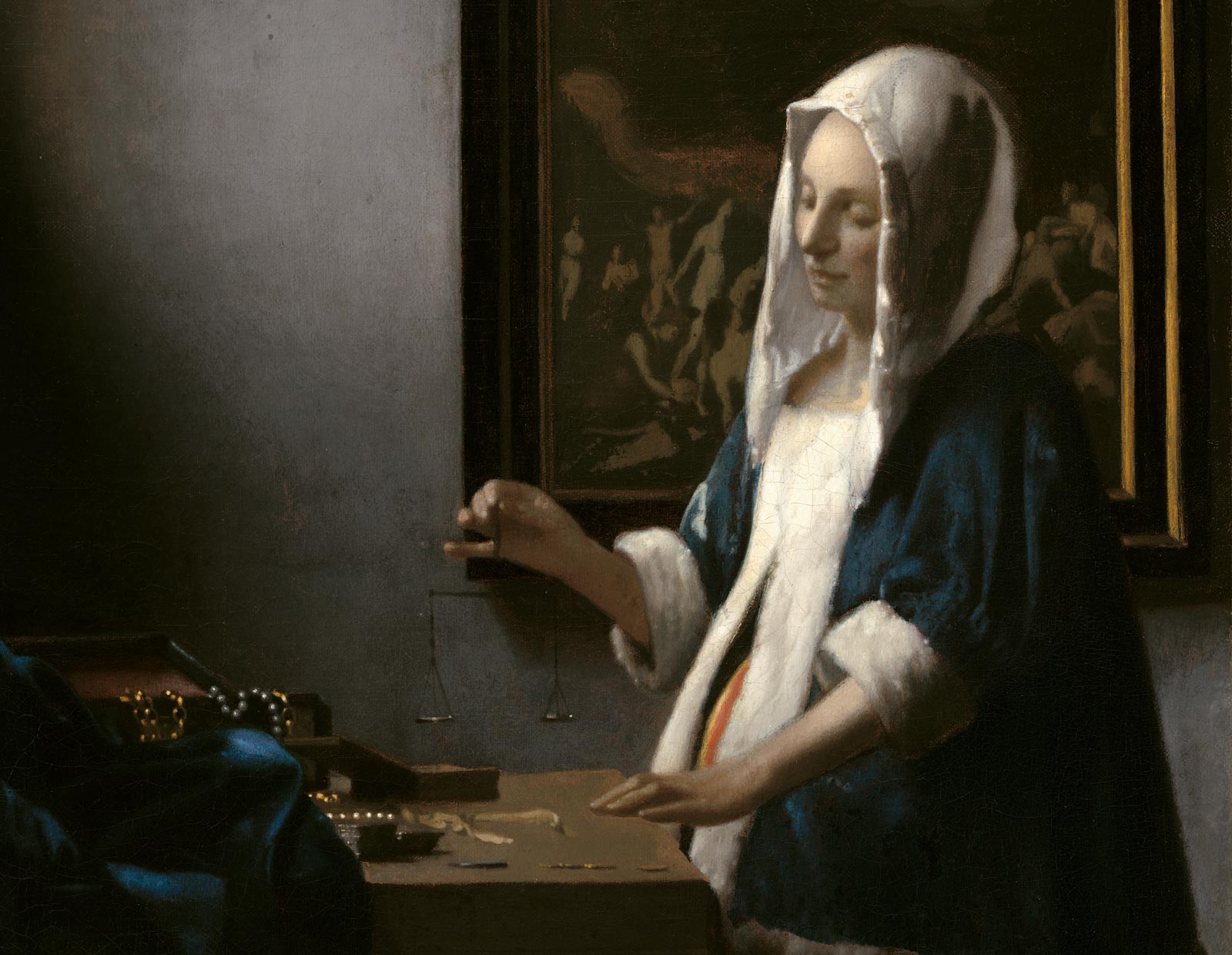Johannes Vermeer is today one of the most famous European artists of all time. He was born and died in the city of Delft, with which he is strongly associated. His father Reynier was a weaver of fine cloth, which provided the family a comfortable living. In 1631, the year before Johannes was born, his father joined the St. Luke's Guild as a picture dealer.
No records document Vermeer’s early artistic training and apprenticeship—neither where nor with whom he trained. In 1653 he registered as a master painter with the St. Luke’s Guild and had inherited Reynier’s art-dealing business the previous year. In April 1653 he married a Catholic, Catharina Bolnes, whose mother, Maria Thins, exerted significant influence over the couple’s lives. She is likely to have required Vermeer, born a Reformed Protestant, to convert to Catholicism. Johannes and Catharina eventually moved into Maria’s house.
Vermeer’s early ambition was to become a history painter. By the mid-1650s, however, he had turned to domestic scenes and had begun to express his interest in various techniques and devices that could aid him in creating lifelike effects. For example, he seems to have used the camera obscura, a pinhole device used to project an image onto a wall surface with a lens. The device exaggerated spatial effects, and the projected image was probably not sharply focused. Vermeer often incorporated blurred effects in his work, similar to those created by the camera obscura.





